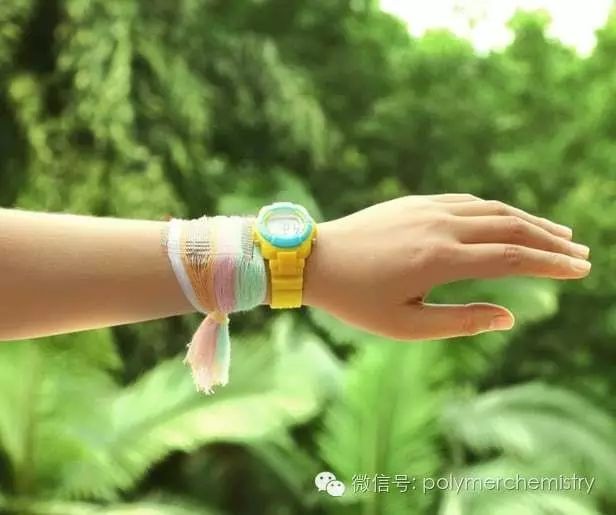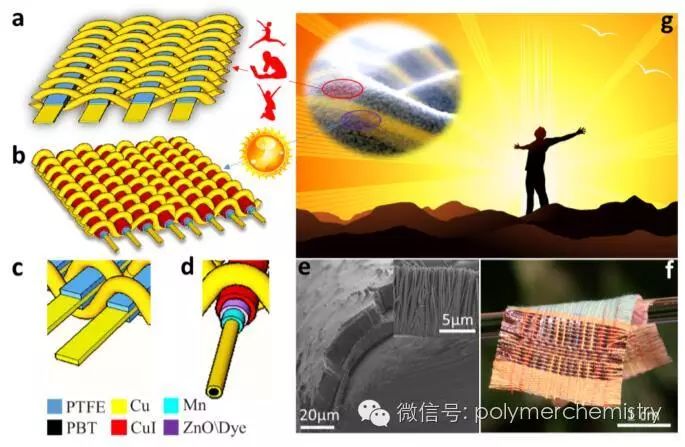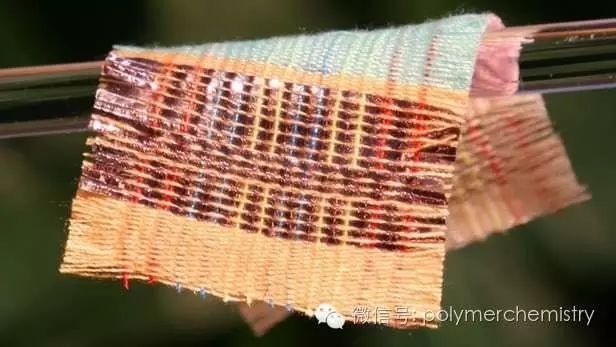Welcome to click the blue font above to follow us.The composite energy fabric can simultaneously collect solar energy and mechanical energy:
With the rapid development of smart wearable devices, the demand for lightweight, affordable, portable, and sustainable power sources has become increasingly prominent. People have long dreamed of achieving an energy technology that can be woven into clothing, capable of collecting various environmental energy such as light, wind, and human motion, and converting it into electrical energy to continuously power personal electronic devices.

Through the collaborative efforts of Professor Zhonglin Wang’s research group at the Georgia Institute of Technology in the USA and Associate Professor Xing Fan’s group at Chongqing University, inspired by shuttle weaving technology, they have overcome the technical difficulties of controlling the stress at the micro-nano interface of electrodes. They successfully wove a novel polymer fiber-based solar cell with a fiber friction nanogenerator, creating a new type of lightweight, breathable, and inexpensive all-solid-state smart wearable fabric. This fabric can not only collect solar energy but also convert the mechanical friction caused by human motion within the fabric into electrical energy, allowing personal electronic devices to operate continuously.

Figure 1. Schematic diagram of the structure of the new all-solid-state smart energy fabric. Based on the fabric structure, (a) friction nanogenerator, (b) fiber solar cell, and its local structure amplification schematic (c) and (d). (e) SEM image of the photoelectric anode. (f) Optical photo of the energy fabric. (f) Schematic showing that this wearable energy fabric can simultaneously convert mechanical energy from human motion and solar energy into electrical energy.
Using shuttle weaving technology, solar fabric modules and nanogenerator modules can be interconnected in various complex series and parallel configurations within a single layer of fabric that is 320 micrometers thick, based on different electrical output requirements, and integrated into different parts of the human clothing as needed. Notably, through the combination of the solar module and the nanogenerator module, this power fabric can achieve stable power output across a resistance range from hundreds of ohms to megaohms, greatly enhancing the fabric’s adaptability as a power source. This work also systematically studied the impact of different fabric structures, such as plain weave, twill, satin, and mixed patterns, on the electrical output of the fabric device. By spinning with colored silk threads, practical energy fabrics with different colors and appearances were realized.

Based on the energy fabric, a series of self-powered clothing, curtains, tents, and other commonly used textile items in daily life can achieve self-powered functionality. Experimental results show that a single layer of fabric measuring 5 cm long and 4 cm wide, driven by both outdoor sunlight and mechanical motion, can not only provide continuous electrical energy to devices such as electronic watches and mobile phones, but also drive electrolysis reactions. In addition, this novel shuttle weaving technology is highly conducive to large-scale production, further reducing the cost of the fabric. Due to its lightweight, soft, wearable, foldable, and breathable properties, this energy fabric has broad application prospects in fields such as wearable electronics, human health, energy, and military applications.
Related work published in the latest issue of Nature Energy CITATION: Jun Chen, Yi Huang, Haiyang Zou, Ruiyuan Liu, Changyuan Tao, Xing Fan, and Zhong Lin Wang, “Micro-cable structured textile for simultaneously harvesting solar and mechanical energy,” (Nature Energy, September 12, 2016). http://dx.doi.org/10.1038/nenergy.2016.138 Dr. Jun Chen from Georgia Institute of Technology (now a postdoctoral researcher at Stanford University) and student Yi Huang from Chongqing University are the co-first authors of the paper.
Abstract:
Developing lightweight, flexible, foldable and sustainable power sources with simple transport and storage remains a challenge and an urgent need for the advancement of next-generation wearable electronics. Here, we report a micro-cable power textile for simultaneously harvesting energy from ambient sunshine and mechanical movement. Solar cells fabricated from lightweight polymer fibres into micro cables are then woven via a shuttle-flying process with fibre-based triboelectric nanogenerators to create a smart fabric. A single layer of such fabric is 320 μm thick and can be integrated into various cloths, curtains, tents and so on. This hybrid power textile, fabricated with a size of 4 cm by 5 cm, was demonstrated to charge a 2 mF commercial capacitor up to 2 V in 1 min under ambient sunlight in the presence of mechanical excitation, such as human motion and wind blowing. The textile could continuously power an electronic watch, directly charge a cell phone and drive water splitting reactions.
This article is reprinted from the website of the Institute of Nano Energy and Systems, Chinese Academy of Sciences, for reference and learning only. Enter the original text in the lower left corner to read 220 recent important advancements in polymer new materials with industrialization prospects.
 For communication and joining groups, please contact QQ/WeChat 2322739585
For communication and joining groups, please contact QQ/WeChat 2322739585
